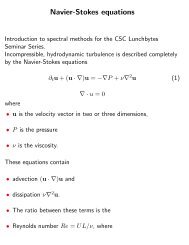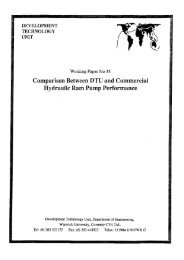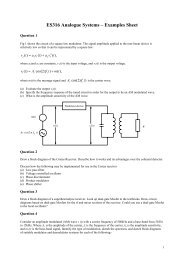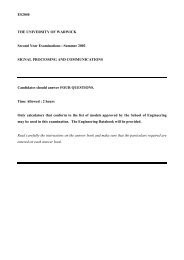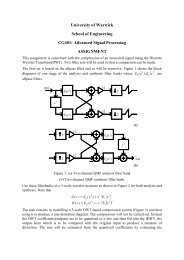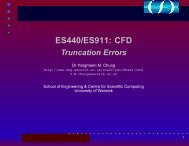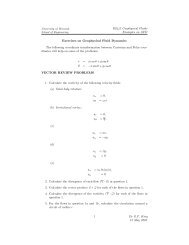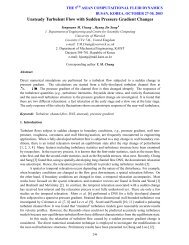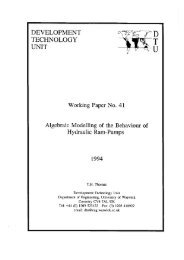Abstracts - KTH Mechanics
Abstracts - KTH Mechanics
Abstracts - KTH Mechanics
Create successful ePaper yourself
Turn your PDF publications into a flip-book with our unique Google optimized e-Paper software.
22<br />
Large eddy simulation of impinging jets with focus on the<br />
inflow boundary conditions<br />
T. Hällqvist ∗ and L. Fuchs †<br />
This paper deals with Large Eddy Simulation (LES) of submerged circular impinging<br />
jets. The main objective is to study the influence from the imposed inflow<br />
conditions. The outcome of a numerical simulation depends strongly on the discretization<br />
scheme, the computational grid and the type of modeling. However, in case of<br />
unsteady simulations the inlet velocity field may be just as important for the quality<br />
and relevance of the results. The benefits having an accurate scheme, a fine grid and a<br />
sophisticated SGS model may not be sufficient if not the appropriate inlet conditions<br />
are provided. In some applications, where the inflow is laminar or has limited influence<br />
on the region of interest, the simplest type of velocity data may be considered,<br />
i.e. a mean velocity profile with or without superimposed random perturbations. The<br />
major drawback with random perturbations is that there are no correlations in time<br />
or space. Furthermore, the energy distribution among the different scales is constant.<br />
The consequence is that the applied disturbances will quickly dissipate.<br />
The most correct method is to use the velocity field from a precursor simulation.<br />
By doing this the correct correlations and spectrums are achieved. There are some<br />
drawbacks with this method though, namely the needed amount of storage capacity<br />
and the high cost for the precursor simulation. This method is also relatively inflexible<br />
as an additional calculation must be performed if modifications to the velocity field is<br />
wanted. Within the present work pipe flow simulations have been conducted with the<br />
prescribed Reynolds number, which is Re D = 20000. The data from this simulation<br />
has then been supplied at the inlet of the impinging jet. The impinging jet has a<br />
nozzle-to-plate spacing (H/D) of 2 and 4 jet diameters. Results on mean velocities<br />
and mean scalar concentration as well as higher order statistics are presented for<br />
different type of inflow conditions (see figure 1).<br />
∗ Scania CV AB, SE-151 87 Södertälje, Sweden.<br />
† <strong>KTH</strong> <strong>Mechanics</strong> TR 8, SE-100 44 Stockholm, Sweden.<br />
Figure 1: Influence from boundary conditions on the instantaneous scalar field for<br />
H/D = 4. Left picture: randomly perturbed top-hat profile, middle picture: randomly<br />
perturbed mollified profile, right picture: turbulent inflow conditions.



